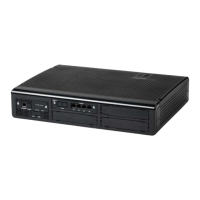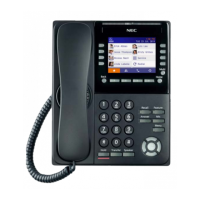CHAPTER 3 SYSTEM DATA PROGRAMMING
– 115 –
NWA-008855-001 Rev.1.0
avch3001.fm
DESCRIPTION DATA
Assign a PAD data to each IP-CS, if required.
NOTE: For changing these PAD data by
CMAD Y=01/08/09/10, Make Busy/
Make Idle of IP-CS (CME5 Y=3) is
not required.
•
(1)
(2)
Y=01/08/09/10 Connecting Patterns
000-255: CS No.
See the following table:
T: Transmitter (PS to IP-CS) PAD (dB)/R: Receiver (IP-CS to PS) PAD (dB)
+: Gain
Assign the CS number of the Control CS
which has a SYS-ID.
•
(1)
(2)
Y=00
09: CS No. of CS with SYS-ID
000-255: LEN
Set the Control Signal Mode of the Calling Ar-
ea.
•
(1)
(2)
Y=10
00-31: Calling Area No.
02 : Crowded Mode
15 : Normal Mode
NOTE: The Mode is assigned according to the traffic. When the accommodated IP-CS encounters
high traffic in its radio zone, select the mode to 02 Crowded Mode, so that the IP-CS man-
ages to process the calls, but the PS uses much more battery than Normal Mode.
Specify the width of the Calling Area.
When there are many IP-CSs in the Calling
Area and each IP-CS covers a narrow area, fol-
low the initial data setting 3.
When a IP-CS covers a wide area, set the data
to 1.
•
(1)
(2)
Y=11
00-31: Calling Area No.
1: Wide
3 : Narrow
L
CMAD
2ND DATA
PAD DATA (T/R)
Y=01
(IP-CS and COT/
ODT/DID/IPT)
Y=08
(IP-CS and DTI/
BRT/PRT/CCT/
Virtual IPT)
Y=09
(IP-CS and LC/
DLC/ILC)
Y=10
(IP-CS and CSI)
00 0/0 0/0 0/0 0/0
09 +6/0 +6/0 +6/0 +6/0
15 0/0 0/0 0/+6 0/+6
CMAE
M
CS DATA PROGRAMMING

